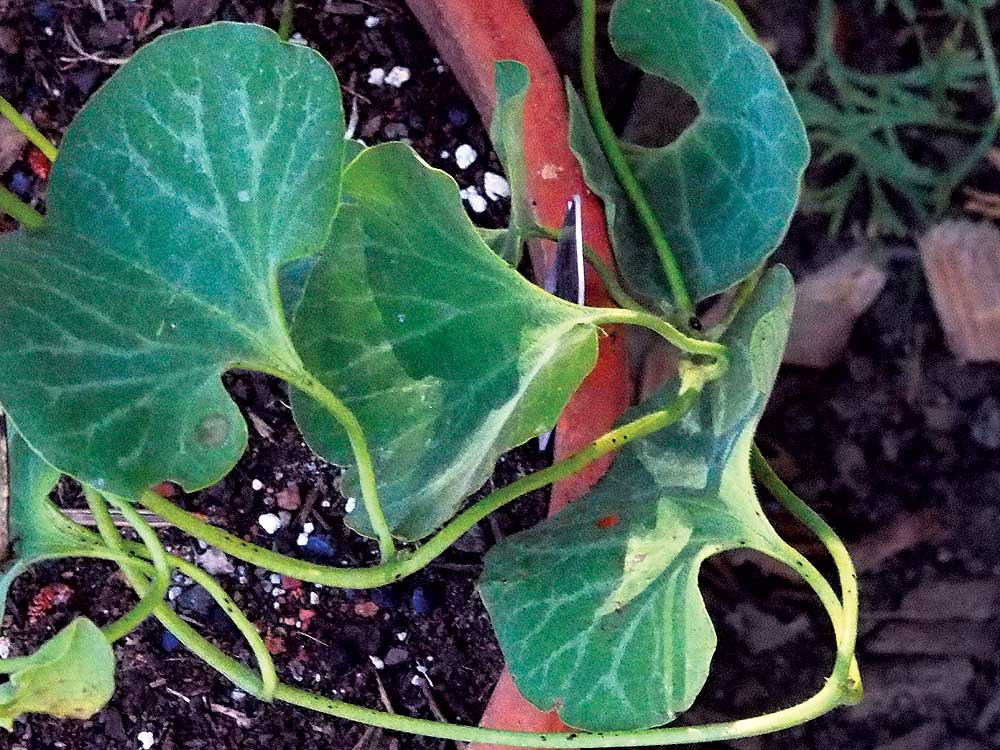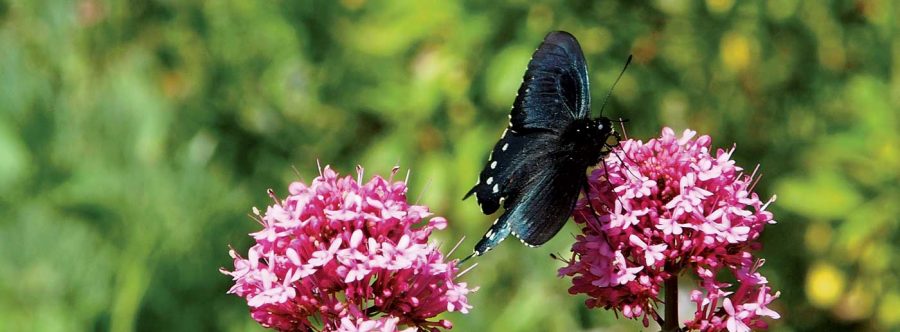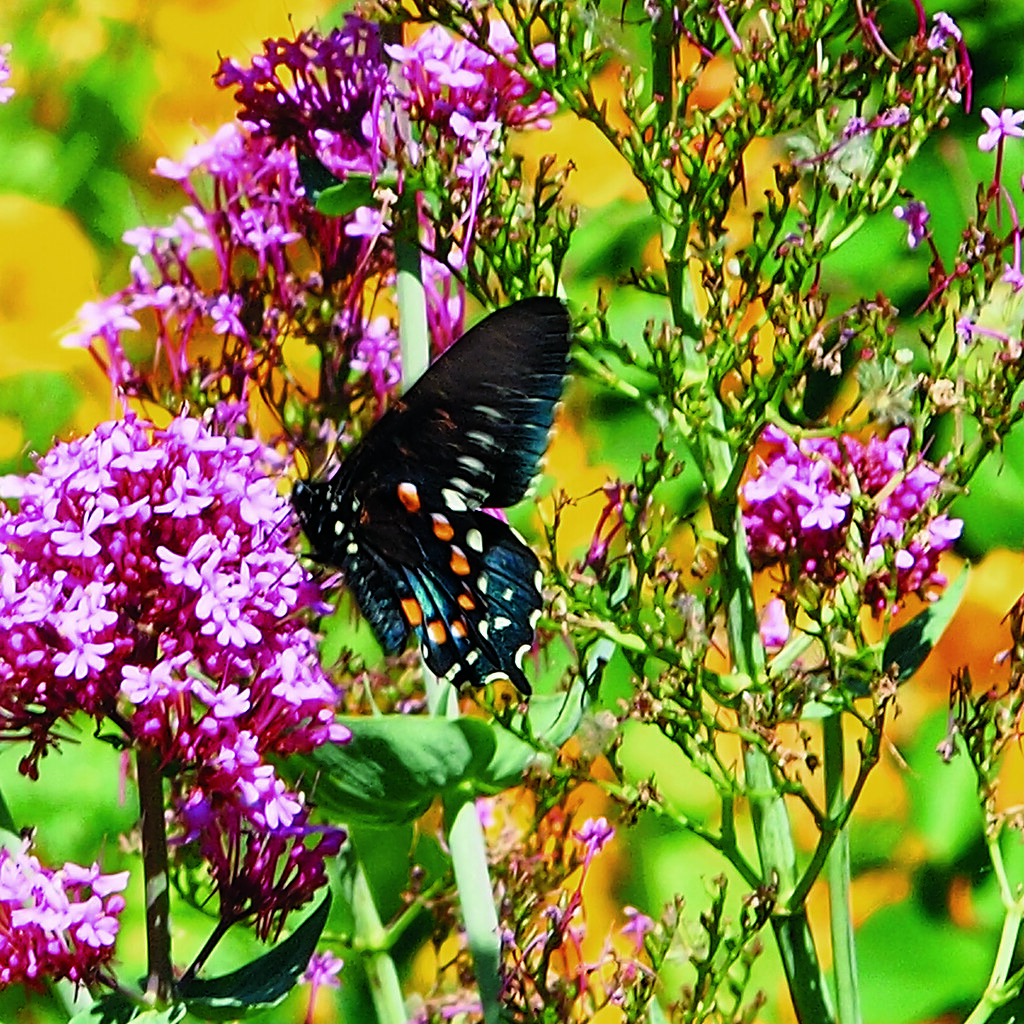Our native California Pipevine butterfly, Battus philenor, is a handsome swallowtail notable for its deep iridescent blue color decorated with orange and white polka dots. It favors coastal scrub and inland riparian areas, but essentially is found wherever the native California pipevine plant, Aristolochia californica (also known as Dutchman’s Pipe for its strangely shaped flowers) is found. It is the sole host plant for this butterfly, which is consequently entirely dependent upon it for survival.
Among many food plants is Jupiter’s Beard, Centranthus ruber, a volunteer in our garden, shown above and at the bottom of this post. All butterflies, of course, have host plants where eggs are laid and caterpillars develop, as well as food plants that are sources of nectar during the insect’s butterfly stage.

Pipevine plant, Aristolochia californica.
Swallowtails that feed on Aristolochia mainly live in the tropics. This one is a northern pioneer of the species. The host plant provides the insect with toxic aristolochic acids, and the distinctive color and markings announce the toxins’ presence to potential predators, who take note and look for more palatable prey.
It is said of the pipevine plant that in the first year it sleeps, in the second year it creeps, and in the third year it leaps. In favorable conditions, the vine can climb to the top of tall trees. But is also content to crawl along the ground if need be. Our pipevine, shown above, is in its second year.
Art Shapiro has an excellent page with more information on Battus philenor. Las Pilitas is a good place to read about Aristolochiua californica and other native plants.


